Most Amazing Lost Cities Of The World
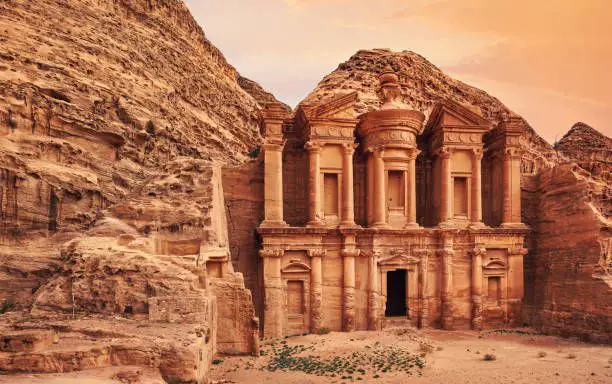
Throughout history, there have been numerous lost cities that have captured our imagination and intrigued us with their mysteries. These cities, buried beneath the sands of time, have fascinated archaeologists, historians, and curious travelers alike.
From ancient civilizations to abandoned modern metropolises, the world is filled with incredible lost cities waiting to be discovered. Here are some of the most amazing lost cities of the world.
1. Petra, Jordan
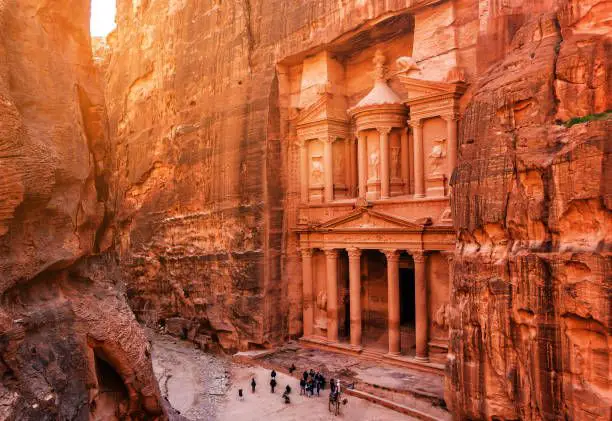
Petra is a stunning ancient city located in southern Jordan, known for its impressive architecture, intricate carvings, and dramatic rock formations.
The city was built by the Nabataean people around the 6th century BC and was an important center of trade and commerce.
Today, it is one of the most famous tourist destinations in the Middle East, attracting millions of visitors each year.
The most iconic feature of Petra is the Treasury, a beautiful temple carved into the sandstone cliffs.
The Treasury is an impressive sight, with its intricate façade and ornate carvings. Another highlight of Petra is the Monastery, a temple located at the top of a steep hill.
The Monastery is a challenging hike, but the stunning views and impressive architecture make it well worth the effort.
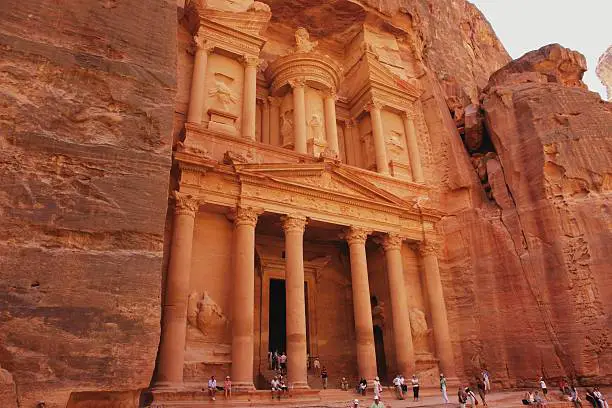
Petra is also home to a number of tombs, temples, and other ancient structures. The Royal Tombs are a series of four tombs carved into the cliffs, while the Great Temple is a massive structure that was used for religious and administrative purposes.
The Roman Theater is another impressive sight, with its dramatic backdrop of cliffs and rock formations.
One of the best ways to explore Petra is on foot. The city is accessed via a narrow canyon known as the Siq, which is flanked by towering rock walls.
As visitors walk through the Siq, they are treated to stunning views of the Treasury and other structures carved into the cliffs.
Petra is also a popular destination for adventure travelers. Visitors can take a camel or horseback ride through the city, go hiking or rock climbing, or even take a hot air balloon ride over the ruins.
Overall, Petra is a fascinating destination that offers a glimpse into the ancient world. Its stunning architecture, dramatic scenery, and rich history make it a must-see for anyone traveling to Jordan or the Middle East.
2. Machu Picchu, Peru
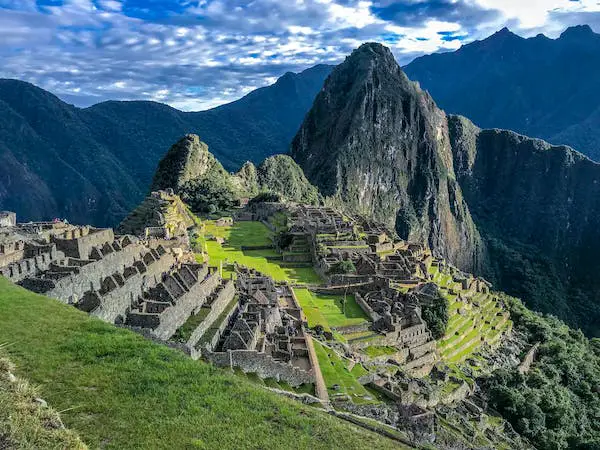
Machu Picchu is a magnificent lost city located in the Andes Mountains of Peru. Built by the Inca people in the 15th century, the city is perched on a mountaintop and surrounded by steep cliffs and dense jungle.
Machu Picchu was abandoned after the Spanish conquest of Peru in the 16th century and remained hidden for centuries, until it was rediscovered by American explorer Hiram Bingham in 1911.
Machu Picchu is renowned for its impressive architecture and engineering. The city is built on a series of terraces, which were used for agriculture and to prevent soil erosion.
The city's buildings were constructed from massive blocks of stone that were carefully cut and fitted together without the use of mortar.
The most famous structures in Machu Picchu are the Temple of the Sun, the Temple of the Three Windows, and the Intihuatana Stone, which is believed to have served as a sundial and calendar.
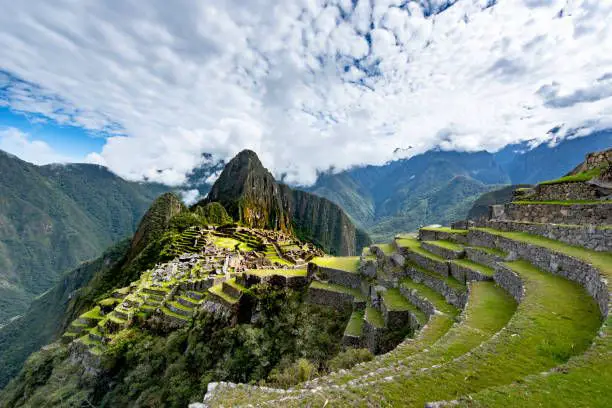
Visitors can also explore the residential areas of the city, which include houses, courtyards, and storage buildings.
One of the best ways to experience Machu Picchu is by hiking the Inca Trail, a four-day trek through the Andes Mountains that ends at the city.
Along the way, hikers are treated to stunning views of the mountains and valleys, as well as other Inca ruins and archaeological sites.
Another popular way to visit Machu Picchu is by taking the train from Cusco, the ancient capital of the Inca Empire.
The train journey takes passengers through breathtaking mountain scenery and stops in the town of Aguas Calientes, which is located at the base of Machu Picchu.
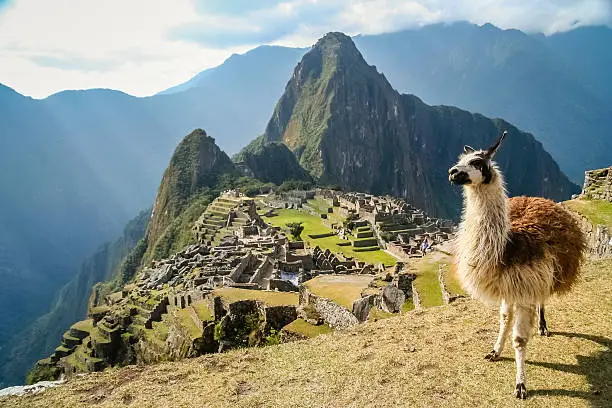
Machu Picchu is also a popular destination for spiritual seekers and those interested in Andean culture.
Many visitors participate in traditional ceremonies and rituals, such as coca leaf readings and offerings to the earth goddess Pachamama.
Overall, Machu Picchu is a remarkable destination that combines stunning natural beauty, impressive architecture, and rich history.
Its status as a UNESCO World Heritage site and one of the Seven Wonders of the World has cemented its place as one of the most famous and awe-inspiring lost cities in the world.
3. Great Zimbabwe, Zimbabwe
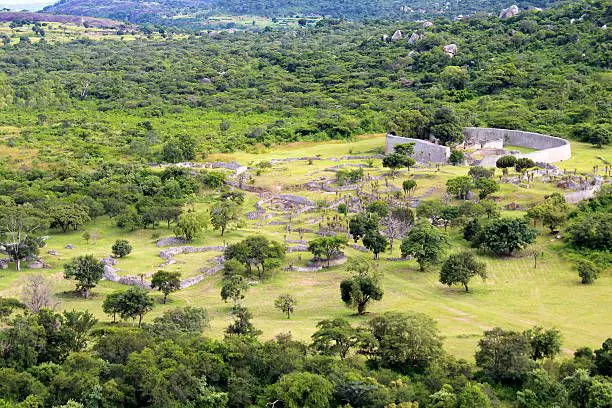
Great Zimbabwe is an ancient city located in southeastern Zimbabwe, near the modern-day city of Masvingo.
The city was built by the Shona people between the 11th and 15th centuries and was the capital of the Kingdom of Zimbabwe, a powerful trading empire that controlled much of southern Africa.
Today, Great Zimbabwe is a UNESCO World Heritage Site and a fascinating destination for anyone interested in African history and archaeology.
The centerpiece of Great Zimbabwe is the Great Enclosure, a massive stone structure that was likely used for religious and ceremonial purposes.
The enclosure is surrounded by a 20-foot-tall wall made of carefully fitted stones, some of which weigh as much as 12 tons.
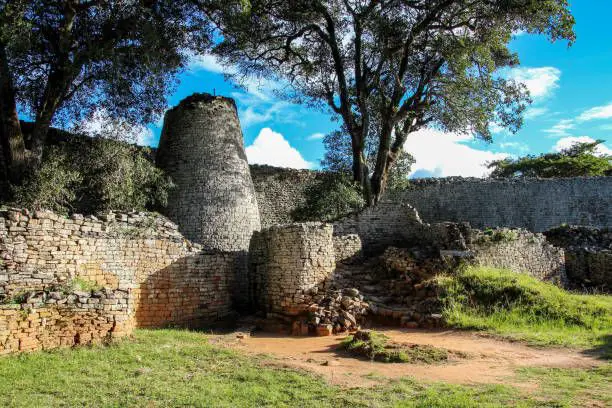
Visitors to Great Zimbabwe can explore the Great Enclosure and learn about the sophisticated stonework techniques used by the city's builders.
In addition to the Great Enclosure, Great Zimbabwe was also home to a number of other impressive structures, including a royal palace, public plazas, and residential neighborhoods.
The city's advanced agriculture and trade networks also made it a center of economic and political power in the region.
Today, Great Zimbabwe is a fascinating destination for anyone interested in African history and archaeology.
Its impressive stone structures and sophisticated engineering provide a glimpse into the ancient civilization that once thrived here, and its on-site museum and interpretive center offer educational exhibits and programs for visitors of all ages.
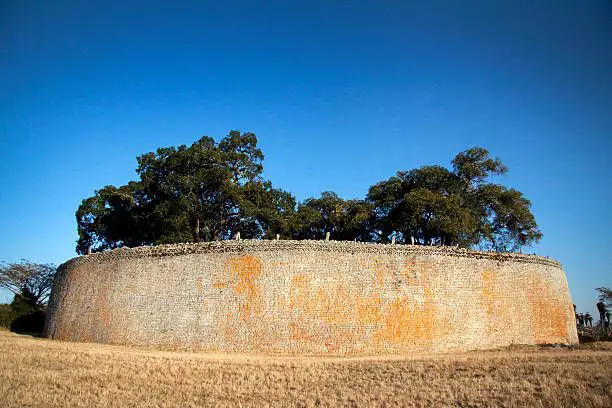
Visitors to Great Zimbabwe can explore the ruins of the city on foot, and many tour operators offer guided tours of the area.
The city's remote location and relative obscurity mean that it is often much less crowded than other tourist destinations, making it a peaceful and contemplative place to explore.
Overall, Great Zimbabwe is a remarkable lost city that provides a unique window into the history and culture of ancient Africa.
Its impressive stone structures and sophisticated engineering, as well as its rich history and culture, make it a must-visit destination for anyone interested in African archaeology and history.
4. Angkor, Cambodia
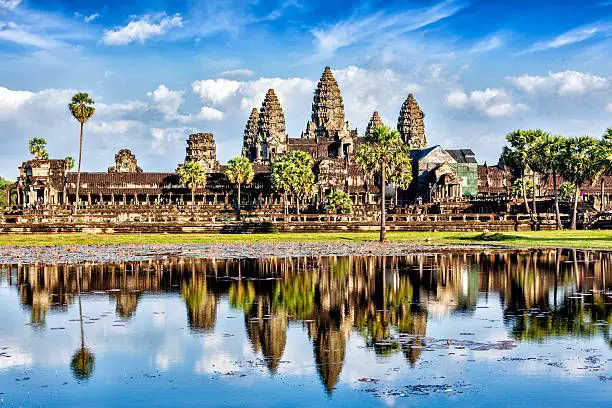
Angkor is a vast complex of temples and ruins located in the dense jungles of northern Cambodia.
The city was the center of the Khmer Empire, which ruled much of Southeast Asia from the 9th to the 15th centuries.
Angkor is one of the largest religious sites in the world, and its impressive architecture and rich history have made it a popular tourist destination.
The most famous structure in Angkor is the temple of Angkor Wat, which is one of the largest religious monuments in the world.
Built in the 12th century, Angkor Wat was originally a Hindu temple but was later converted to a Buddhist temple.
The temple is renowned for its intricate carvings, massive moat, and stunning reflection in the surrounding water.
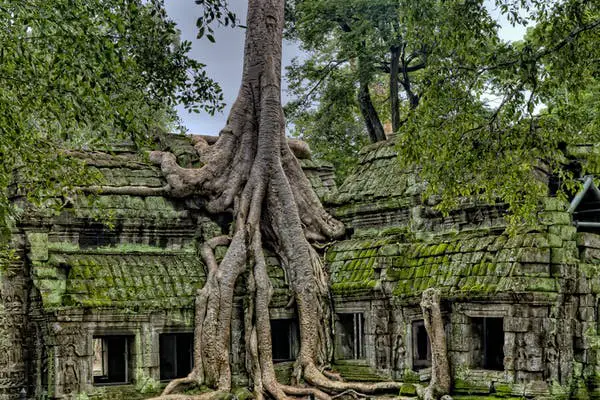
Other notable structures in Angkor include the Bayon temple, which features 54 towers decorated with enigmatic faces, and Ta Prohm, a temple that has been largely consumed by the jungle and is famous for its towering trees that grow out of the temple walls.
Angkor is also home to a vast network of canals and reservoirs that were used for irrigation and transportation.
These waterworks allowed the Khmer Empire to become one of the most powerful and prosperous in Southeast Asia.
One of the best ways to experience Angkor is by taking a guided tour of the temples and ruins. Visitors can explore the temples on foot or by bike, and many tour operators offer guided hikes and treks through the surrounding jungle.
Angkor is also a popular destination for cultural and spiritual activities. Visitors can participate in traditional Cambodian dance and music performances, or take part in meditation and yoga retreats.
Overall, Angkor is a remarkable destination that offers a glimpse into the ancient history and culture of Southeast Asia.
Its impressive architecture, intricate carvings, and lush jungle surroundings make it a must-see destination for anyone traveling to Cambodia.
5. Tikal, Guatemala
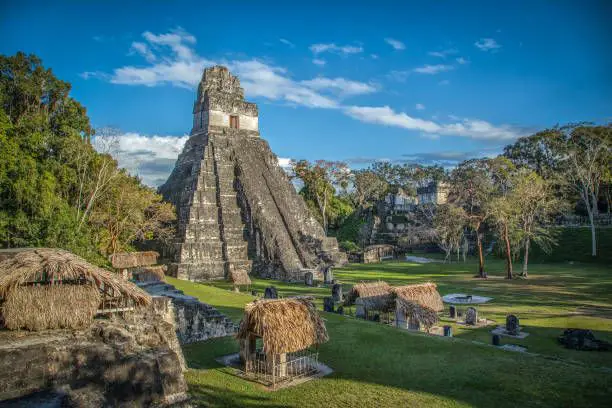
Tikal is an ancient city located in the rainforests of northern Guatemala. The city was the capital of one of the most powerful kingdoms of the ancient Maya civilization, which flourished in the region from about 2000 BC to 900 AD.
Tikal is renowned for its impressive temples, pyramids, and plazas, and its rich history and architecture have made it a popular tourist destination.
One of the most famous structures in Tikal is the Temple of the Jaguar, a towering pyramid that stands over 45 meters tall.
Visitors can climb to the top of the pyramid to enjoy breathtaking views of the surrounding jungle and other nearby temples and ruins.
Another notable structure in Tikal is the Temple of the Masks, which features large stone masks depicting the faces of Maya gods.
The temple was built to honor the sun god and is renowned for its intricate carvings and decorations.
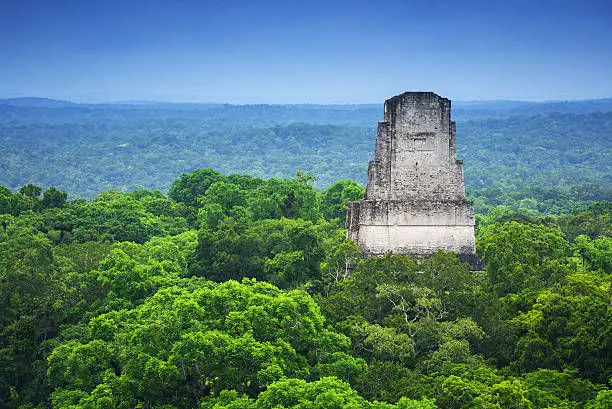
Tikal is also home to a vast network of plazas, ball courts, and residential areas that provide a glimpse into the daily life and culture of the ancient Maya people.
Visitors can explore these areas on foot or by bike, and many tour operators offer guided hikes and treks through the surrounding jungle.
Tikal is also a popular destination for wildlife enthusiasts, as the surrounding jungle is home to a wide variety of exotic birds, monkeys, and other wildlife.
Visitors can take guided tours to spot these animals and learn more about the diverse ecosystem of the region.
Overall, Tikal is a remarkable destination that offers a unique glimpse into the ancient history and culture of the Maya civilization.
Its impressive architecture, intricate carvings, and lush jungle surroundings make it a must-see destination for anyone traveling to Guatemala.
6. Pompeii, Italy
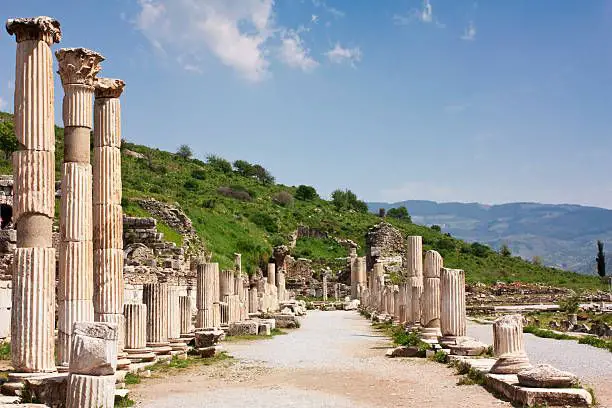
Pompeii was an ancient Roman city located near modern-day Naples in Italy. The city was destroyed and buried under volcanic ash and pumice when Mount Vesuvius erupted in 79 AD, preserving the city's buildings and artifacts until they were rediscovered in the 18th century.
Today, Pompeii is one of the most visited archaeological sites in the world, offering a fascinating glimpse into ancient Roman life.
The city of Pompeii was a bustling commercial center with a population of about 20,000 people.
The city was home to a wide variety of buildings, including homes, temples, markets, and public baths.
Many of these buildings have been preserved in remarkable detail, allowing visitors to see what life was like in ancient Rome.
One of the most impressive structures in Pompeii is the Amphitheater, a massive arena that could seat up to 20,000 people for gladiatorial games and other public spectacles.
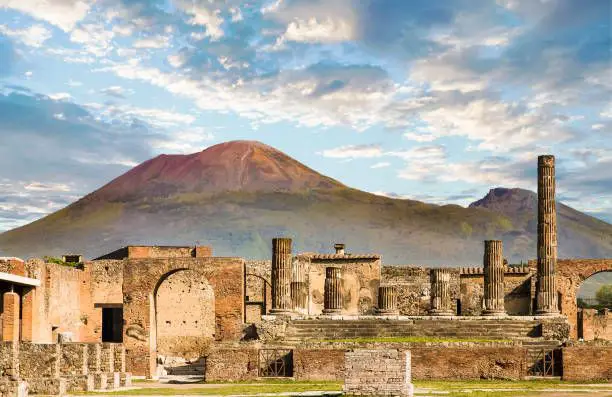
Visitors can explore the arena and its underground chambers, where gladiators and wild animals were kept before their battles.
Another popular attraction in Pompeii is the House of the Vettii, a well-preserved Roman house that features intricate mosaics, frescoes, and other decorations.
Visitors can see the house's indoor and outdoor courtyards, as well as its bedrooms, dining rooms, and other living spaces.
Pompeii also features a number of public buildings, such as the Forum, a large public square that was the center of political and social life in the city.
Visitors can see the remains of the Forum's temples, public buildings, and other structures, as well as the nearby markets and shops.
Overall, Pompeii is a remarkable destination that offers a unique glimpse into ancient Roman life.
Its well-preserved buildings, artifacts, and art provide a fascinating window into a civilization that shaped much of Western culture. Anyone interested in history or archaeology should consider a visit to this incredible lost city.
7. Ani, Turkey
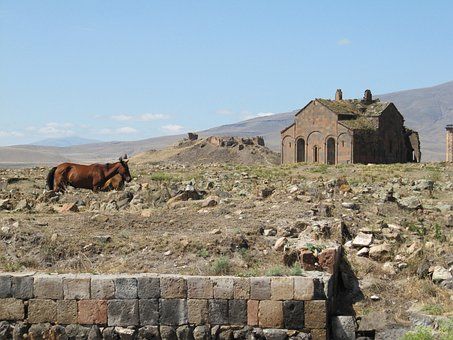
Ani is an ancient city located in eastern Turkey, near the Armenian border. The city was once the capital of the Armenian Bagratid Kingdom and was a prosperous trade center in the Middle Ages.
Today, Ani is an abandoned ghost town, but its impressive ruins and buildings provide a glimpse into its former glory.
Ani's most famous building is the Cathedral of Ani, also known as the Church of the Holy Redeemer.
The cathedral was built in the 10th century and is a remarkable example of Armenian medieval architecture.
The cathedral's ornate decorations, intricate carvings, and soaring arches make it a must-see destination for anyone interested in architecture or history.
Another notable building in Ani is the Church of Saint Gregory of Tigran Honents, which was built in the 13th century.
The church's colorful frescoes and intricate carvings are a testament to the artistic skills of the medieval Armenian craftsmen who built it.

Ani was also home to a number of other impressive buildings, including mosques, palaces, and bathhouses.
Many of these structures have been damaged by earthquakes, looters, and neglect over the centuries, but they still offer a glimpse into the city's former grandeur.
Visitors to Ani can explore the ruins of the city on foot or by bike, and many tour operators offer guided tours of the area.
The city's remote location and relative obscurity mean that it is often much less crowded than other tourist destinations, making it a peaceful and contemplative place to explore.
Overall, Ani is a remarkable lost city that provides a fascinating glimpse into the history and culture of the Armenian Bagratid Kingdom.
Its impressive buildings and ruins are a testament to the creativity and ingenuity of the medieval Armenian people, and anyone interested in architecture or history should consider a visit to this incredible site.
8. Cahokia, United States
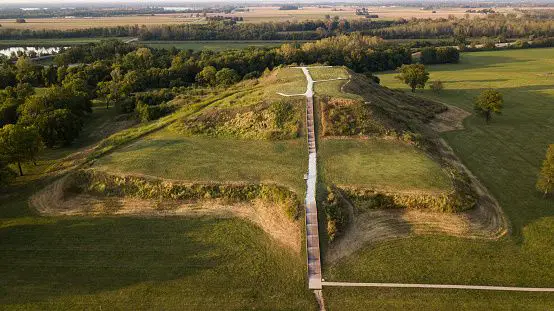
Cahokia is a pre-Columbian city located in southern Illinois, near the modern-day city of St. Louis, Missouri.
At its peak in the 11th century, Cahokia was one of the largest cities in North America and was home to more than 20,000 people.
Today, Cahokia is a UNESCO World Heritage Site and a fascinating destination for anyone interested in Native American history and archaeology.
The centerpiece of Cahokia is the Monks Mound, a massive earthen structure that rises 100 feet above the surrounding landscape.
The mound was the largest pre-Columbian structure in North America and was likely used for religious and ceremonial purposes.
Visitors to Cahokia can climb to the top of the Monks Mound for spectacular views of the surrounding countryside.
Cahokia was also home to a number of other earthen mounds, including the Grand Plaza, which was the city's central public space, and the Woodhenge, a circular structure that was likely used for astronomical observations.
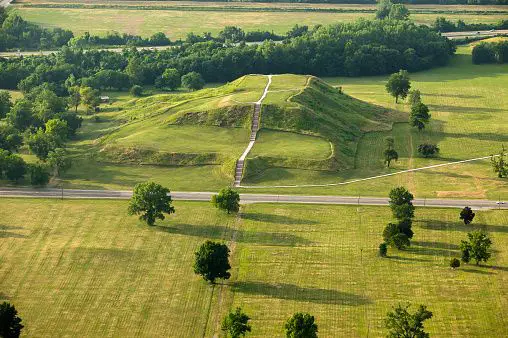
Visitors to Cahokia can explore these structures and learn about the people who built them through the on-site interpretive center and museum.
In addition to the mounds, Cahokia was also home to a number of impressive buildings, including a massive wooden palisade that encircled the city, as well as public plazas, residential neighborhoods, and artisan workshops.
The city's advanced agriculture and trade networks also made it a center of economic and political power in the region.
Today, Cahokia is a fascinating destination for anyone interested in Native American history and archaeology.
Its impressive mounds and structures provide a glimpse into the sophisticated civilization that once thrived here, and its on-site museum and interpretive center offer educational exhibits and programs for visitors of all ages.
Overall, Cahokia is a remarkable lost city that provides a unique window into the history and culture of the ancient Mississippian civilization.
Its impressive earthen mounds and structures, as well as its rich history and culture, make it a must-visit destination for anyone interested in North American archaeology and history.
Conclusion
The world is full of amazing lost cities that offer a glimpse into the rich history and culture of our ancestors.
From Petra in Jordan and Machu Picchu in Peru to Angkor in Cambodia and Tikal in Guatemala, these ancient cities are architectural wonders that continue to awe and inspire visitors from around the world.
These lost cities provide a unique window into the past, offering insight into the beliefs, customs, and lifestyles of the people who built them.
They serve as reminders of the impressive engineering, artistry, and innovation of our ancestors, and their existence challenges our notions of what is possible with human ingenuity and determination.
Whether exploring the towering pyramids of Tikal or the intricate stonework of Great Zimbabwe, visiting these lost cities is a transformative experience that connects us with the past and helps us better understand our place in the world.
As we continue to explore and uncover the mysteries of these ancient cities, we gain a deeper appreciation for the diversity and complexity of human history and culture.
